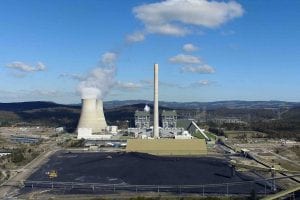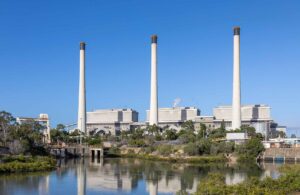The Australian Government’s Office of the Chief Economist (OCE) released a report “Coal in India 2019” last week looking at the risks and outlook for Australian coal exports to India, the world’s second largest producer, consumer and importer of coal behind China.
In the main, the OCE report presents a relatively balanced perspective with a key message: “The outlook for India’s thermal coal imports is finely balanced and uncertain.”
Australian coal lobbyists and boosters ignored this message and cherry-picked from the report to paint an entirely positive perspective on coal’s outlook to the Australian public.
Lobbyists used the OCE report to claim India could present a market upside for Australia of 37 million tonnes per annum (Mtpa), or three times the size of the Adani Carmichael coal proposal.
Yet, the Australian government’s approved Carmichael HALE coal mine is for 60Mtpa of exports, almost twice the entire possible upside the OCE finds might occur if India can’t deliver on their target to supply 100% of their own needs from their own domestic coal industry.
In order to counter some of the wilder assertions of lobbyists, IEEFA has reviewed the OCE report to decipher what’s really being stated.
The report’s first paragraph acknowledges that coal exporters are confronting “falling demand in Europe, North America and North East Asia. But while India is one of the great hopes for thermal coal exporters (alongside South East Asia) it also presents significant risks.”
While most major economies of the world are moving rapidly away from coal, the OCE chose to focus primarily on India – the one major country that might provide some relief to coal’s technological obsolescence and terminal decline evident in most developed world economies.
The OCE report found that India’s domestic coal production growth rate in the last five years was 5.5% annually – an enormous improvement on the 1.0% annual growth evident in the five years to 2014. The report concluded that if the fivefold acceleration in domestic production faltered for some reason, there is scope for India to increase its coal imports.
What the OCE report failed to mention was the Government of India this month came out with a target to reduce coal imports by a third by 2025. Coal India Ltd this week referenced a plan to replace 50-55Mtpa of thermal coal imports within the next three years.
But, let’s not get bogged down. The OCE report backed their conclusion by pointing to Indian state-controlled coal mining and refinery company – Coal India – recently delaying its target to double coal production to 1,000Mtpa by 2026, implying an acceleration to 7.5% annual volume growth over the next seven years, which supports the Government of India’s forecast for reduced imports.
Again however, the wider story is missing. The OCE doesn’t mention that the Indian Government’s own electricity generation company – NTPC – has just this month re-iterated its progress on plans to lift inhouse coal production tenfold to 113Mtpa in order to vertically integrate its 50 gigawatts (GW) of domestic coal-fired power plants, at the same time as it builds 6GW of renewable energy. Nor does the OCE mention that Adani Enterprises is well on track to lift its Indian coal mining capacity tenfold to 100Mtpa.
That means two of India’s largest coal-fired power plant owners are looking to vertically integrate through the development of Indian coal mines of a combined capacity that exceeds India’s total annual coal imports – a risk not addressed in the OCE report.
These developments suggest India is seeking to enhance its energy independence, even as it aggressively implements its target to increase renewable energy installs fivefold in the next 11 years to 523GW.
It would appear that India is aware that energy security is best served through independence from fossil fuel imports – something hurting Australia’s previous key target coal export market – China, which has been turning away unwanted imports of Australian coal for much of 2019.
The OCE report details how Indian companies have three mega-coal mine developments in Australia. In addition to Adani’s Carmichael coal mine, the OCE cites the proposed GVK Hancock’s Alpha coal mine and the Kevin’s Corner mega mine development, of 30Mtpa each and all in the Galilee Basin, while accidently omitting GVK’s equally stranded 24Mtpa Alpha West coal proposal.
The OCE fails to reveal that GVK has no employees in Australia and the parent entity – GVK Singapore – went bankrupt over three years ago with several billion dollars of debts and a creditor sale that failed last year.
The OCE also fails to mention that leading Indian coal-power-focussed corporates collectively spent US$3-4bn acquiring six coal projects in Australia at the start of this decade.
Indian conglomerate Lanco Infratech – acquirer of the Griffin Coal mine in West Australia in 2010 for A$740m – went bankrupt in 2015, leaving Griffin Coal in the hands of receivers for the second time. And Gujarat NRE and subsequently Jindal Steel and Power failed in their bailout the financially stranded Australian Stock Exchange listed Wollongong Coal, leaving them carrying $700m of debts secured against an entity with no equity, cash nor profit.
The section in the OCE report on “Indian investments in Australia” might be considered a tad selective as Adani Mining (Australia) – $30m current assets vs $1.8bn of current liabilities – is the most financially robust of the six Indian ventures into Australian coal this past decade. To IEEFA’s contrarian perspective, Indian investors in the main are not looking to replicate the Australian thermal coal graveyard.
IEEFA notes the OCE report is misguided in relying on International Energy Agency (IEA) forecasts for solar to judge coal remaining cost competitive in India. The IEA’s solar forecasts have been wrong every year for more than a decade, and are likely to be proven wrong again in 2019 on solar cost deflation and installation growth rates.
The OCE quotes the IEA forecasts for Indian solar costs in 2017 at US$80 per megawatt hour (MWh), falling to US$65/MWh by 2040. IEEFA notes that India installed some US$10bn of solar in 2017, at tariffs of Rs2.44-2.90 per kilowatt hour. With the USD at Rs71, this equates to US$34-40/MWh.
Given Indian solar tariffs have zero inflation indexation contracted in for 25 years, solar’s levelised cost of energy (LCOE) is an exceptionally deflationary US$20-30/MWh – half the price of a new ultra-supercritical (USC) coal-fired power plant using well below import parity Indian sourced thermal coal. What this means is the OCE is relying on the IEA’s LCOE estimate, yet it is out by a factor of 300% of the actual historic price of solar.
Given the Indian banking sector already has upwards of US$60bn in non-performing assets across the thermal power sector, IEEFA notes there is a serious issue of who might continue to finance more expensive and slightly less emissions intensive USC power plants configured to use expensive imported thermal coal at twice the price of deflationary domestic Indian solar and wind projects.
The OCE report analyses in great detail the cost of renewable energy intermittency, and the potential difficulties in grid integration of the target 523GW of renewable energy by 2030.
At the same time, the OCE report fails to acknowledge India’s growing extreme weather events, its water scarcity crisis, and rampant air pollution – all of which are getting worse with every year. These clear and compelling externalities proving major headwinds to the development of new coal-fired power plants, but the OCE dismisses these collective risks.
The OCE concludes the lack of an available fuel supply is the major cause of US$60bn of stranded thermal power generation capacity in India.
This narrow perspective fails to acknowledge that banks are unwilling to finance new coal-fired power plants that have yet to secure long term power purchase agreements (PPA), and Indian distribution companies are unwilling to sign high priced coal PPAs when low cost renewable energy PPAs are immediately 20-30% cheaper, while also having the added benefit of zero inflation indexation over the 25 year life – providing a critically important new deflationary energy supply for India.
It is quite possible Australia might progressively gain share in the global coal market, if Indonesia and South Africa chose for some reason to make room. But IEEFA notes that gaining share in a market the IEA forecasts will decline by 80-90% within the next 3 decades – if the world is to avoid catastrophic global warming – would prove an entirely pyrrhic victory.







